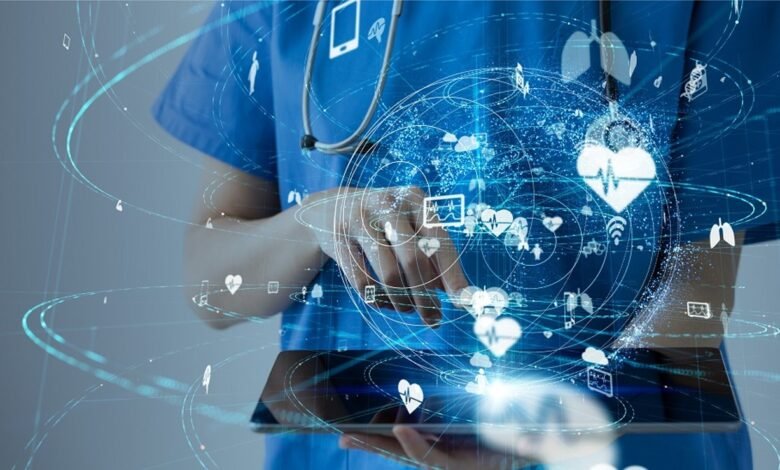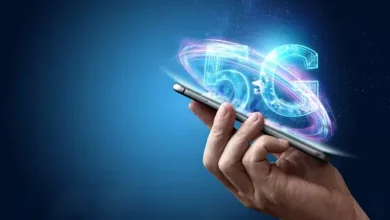IoT in Healthcare: Tips for Implementing Remote Patient Monitoring

In the ever-evolving landscape of healthcare, the integration of IoT (Internet of Things) technologies has emerged as a game-changer, revolutionizing patient care and management. Among the myriad applications of IoT in healthcare, remote patient monitoring stands out as a pivotal advancement, enabling healthcare providers to remotely track and manage patients’ health conditions in real-time. This transformative technology holds immense promise in enhancing patient outcomes, optimizing resource utilization, and fostering a more proactive approach to healthcare delivery.
Implementing remote patient monitoring through IoT entails a strategic approach that encompasses various facets, from selecting suitable IoT devices to establishing robust data management protocols. As healthcare institutions navigate this implementation journey, it’s crucial to prioritize aspects such as data security, interoperability, and scalability. By leveraging IoT effectively, healthcare providers can usher in a new era of patient-centric care, where proactive monitoring and timely interventions empower individuals to take charge of their health while fostering closer collaboration between patients and providers.
IoT in Healthcare: Tips for Implementing Remote Patient Monitoring
Benefits of IoT in Healthcare
Enhanced Patient Care
IoT facilitates continuous monitoring of patients’ vital signs and health metrics. This real-time data empowers healthcare providers to detect issues promptly, leading to quicker interventions and personalized treatment plans.
Improved Efficiency
Automation and data-driven insights streamline healthcare processes, reducing administrative burdens and allowing healthcare professionals to allocate more time to direct patient care. This efficiency is crucial in today’s fast-paced healthcare environment.
Cost Savings
By preventing hospital readmissions through early detection and intervention, IoT in healthcare contributes to significant cost savings. Additionally, optimized workflows and resource allocation result in a more economical healthcare system.
Challenges in Implementing IoT in Healthcare
Security Concerns
The interconnected nature of IoT devices raises concerns about data security. Robust cybersecurity measures must be in place to safeguard patient information and maintain trust in healthcare systems.
Integration Issues
The integration of IoT devices with existing healthcare infrastructure can be challenging. Compatibility issues and interoperability must be addressed to ensure seamless communication between devices and systems.
Regulatory Compliance
Adherence to healthcare regulations is paramount. Navigating the complex landscape of regulatory requirements ensures that IoT implementations comply with standards, ensuring patient safety and legal compliance.
Key Components of Remote Patient Monitoring
Wearable Devices
Wearable devices, such as smartwatches and fitness trackers, play a pivotal role in RPM. These devices continuously monitor patient vitals, providing a wealth of data for healthcare professionals to analyze and act upon.
Sensors and Biometric Monitoring
Implantable sensors and biometric monitoring devices offer a deeper level of patient data. These tools enable healthcare providers to gather detailed information on specific health parameters, enabling more precise diagnostics and treatment plans.
Data Analytics
The true power of RPM lies in the analysis of vast amounts of patient data. Advanced data analytics tools help in identifying patterns, predicting potential health issues, and personalizing patient care.
Best Practices for Successful Implementation
Establish Clear Objectives
Before embarking on an IoT implementation journey, healthcare institutions must define clear objectives. Whether it’s improving patient outcomes, reducing hospitalizations, or enhancing overall efficiency, having well-defined goals sets the direction for a successful RPM program.
Ensure Data Security
To build and maintain trust, prioritize robust cybersecurity measures. Encryption, secure data storage, and access controls are crucial components to ensure the confidentiality and integrity of patient data.
Staff Training and Integration
The successful integration of IoT in healthcare requires proper training for healthcare professionals. From using new devices to interpreting data, staff training ensures the seamless adoption of RPM into daily workflows.
Regular Maintenance and Updates
IoT devices and systems require regular maintenance and updates to address security vulnerabilities and ensure optimal performance. Establishing a routine for maintenance and staying abreast of technological advancements is key to long-term success.
Real-Life Examples of Successful Implementations
Case Study 1: XYZ Hospital
XYZ Hospital implemented an RPM system resulting in a 20% reduction in hospital readmissions. Continuous monitoring allowed for early detection of deteriorating health conditions, enabling timely interventions and personalized care plans.
Case Study 2: ABC Clinic
ABC Clinic integrated wearable devices into their cardiology department. The real-time monitoring of patients with heart conditions led to a 15% improvement in patient outcomes and a 25% reduction in emergency room visits.
Future Trends in IoT for Healthcare
AI Integration
The integration of Artificial Intelligence (AI) into IoT systems will further enhance the analysis of patient data. AI algorithms can identify subtle patterns and trends, providing healthcare professionals with more accurate predictive insights.
Predictive Analytics
Predictive analytics will play a crucial role in anticipating potential health issues. By analyzing historical data, IoT systems can predict and prevent adverse events, leading to proactive healthcare interventions.
Telemedicine Expansion
The synergy between IoT and telemedicine is expected to expand access to healthcare services. Remote consultations, coupled with real-time monitoring through IoT devices, will bridge geographical gaps and improve healthcare accessibility.
Patient Engagement and Education
Involving Patients in RPM
Active involvement of patients in their healthcare journey is essential. Educating patients on the benefits of RPM, teaching them to use wearable devices, and emphasizing the importance of regular monitoring fosters a sense of ownership and responsibility.
Providing Education on Device Usage
Clear and comprehensive education on the usage of IoT devices is crucial. Patient understanding and adherence to proper device usage contribute to the success of RPM programs and improve overall health outcomes.
Impact of IoT on Healthcare Professionals
Streamlined Workflow
The integration of IoT streamlines healthcare workflows, reducing manual tasks and administrative burdens. Healthcare professionals can focus on critical decision-making and patient care, improving overall job satisfaction.
Improved Decision-Making
Access to real-time patient data empowers healthcare professionals to make informed decisions promptly. This data-driven approach enhances diagnostic accuracy and allows for personalized treatment plans, ultimately improving patient outcomes.
Ethical Considerations in RPM
Privacy Concerns
As RPM involves continuous monitoring, addressing privacy concerns is vital. Ensuring transparent communication about data usage, obtaining informed consent, and implementing privacy safeguards are essential ethical considerations.
Informed Consent
Prioritize obtaining informed consent from patients participating in RPM programs. Clearly communicate the purpose, risks, and benefits of remote monitoring, empowering patients to make informed decisions about their healthcare.
Overcoming Resistance to Technology Adoption
Addressing Skepticism
Resistance to technology adoption is common. Addressing skepticism through effective communication, showcasing success stories, and highlighting the tangible benefits of RPM can encourage healthcare professionals and patients to embrace IoT solutions.
Highlighting Success Stories
Sharing success stories from early adopters can inspire confidence in the effectiveness of IoT in healthcare. Real-life examples demonstrate the positive impact of RPM on patient outcomes and healthcare efficiency.
Global Perspectives on IoT in Healthcare
Adoption Rates in Different Countries
The adoption of IoT in healthcare varies globally. Some countries have rapidly embraced these technologies, while others face challenges related to infrastructure, funding, or regulatory frameworks.
Varied Approaches and Successes
Different regions employ varied approaches to IoT implementation in healthcare. Understanding the diverse strategies and learning from successful implementations worldwide can inform best practices for future endeavors.
The Role of Telehealth in IoT Implementation
Telehealth and RPM Synergy
IoT in Healthcare: The integration of telehealth services complements IoT in healthcare. The synergy between telehealth consultations and continuous monitoring through IoT devices ensures comprehensive and accessible healthcare services.
Expanding Access to Healthcare
IoT and telehealth collectively contribute to expanding access to healthcare services, especially in remote or underserved areas. This combination addresses geographical barriers, bringing healthcare closer to those in need.
Continuous Monitoring for Chronic Diseases
Diabetes Management
IoT in Healthcare: Continuous monitoring plays a crucial role in managing chronic diseases like diabetes. IoT devices provide real-time glucose levels, enabling timely interventions and personalized treatment adjustments.
Heart Conditions
Patients with heart conditions benefit significantly from continuous monitoring. Early detection of irregularities allows healthcare professionals to intervene promptly, preventing complications and improving patient outcomes.
Read More: Tips for Successful Industrial IoT Implementation: Best Practices
Conclusion
In conclusion, the integration of IoT in healthcare, specifically in Remote Patient Monitoring, holds tremendous potential for revolutionizing patient care. As we navigate the challenges and harness the benefits, the future promises a healthcare landscape where personalized, data-driven interventions become the norm.
The collaboration between technology and healthcare professionals will undoubtedly lead to improved outcomes, increased efficiency, and a more accessible healthcare system.
FAQs
Is Remote Patient Monitoring secure?
Yes, Remote Patient Monitoring prioritizes data security through encryption and access controls to ensure patient confidentiality.
How does IoT benefit healthcare professionals?
IoT streamlines workflows, reduces administrative tasks, and empowers healthcare professionals with real-time patient data for informed decision-making.
What are the challenges in implementing IoT in healthcare?
Challenges include security concerns, integration issues, and adherence to complex regulatory compliance.
Can IoT be applied to chronic disease management?
Absolutely, IoT plays a pivotal role in continuous monitoring for chronic diseases such as diabetes and heart conditions.
How does telehealth complement IoT in healthcare?
Telehealth and IoT synergize to provide comprehensive healthcare services, especially in remote or underserved areas.











